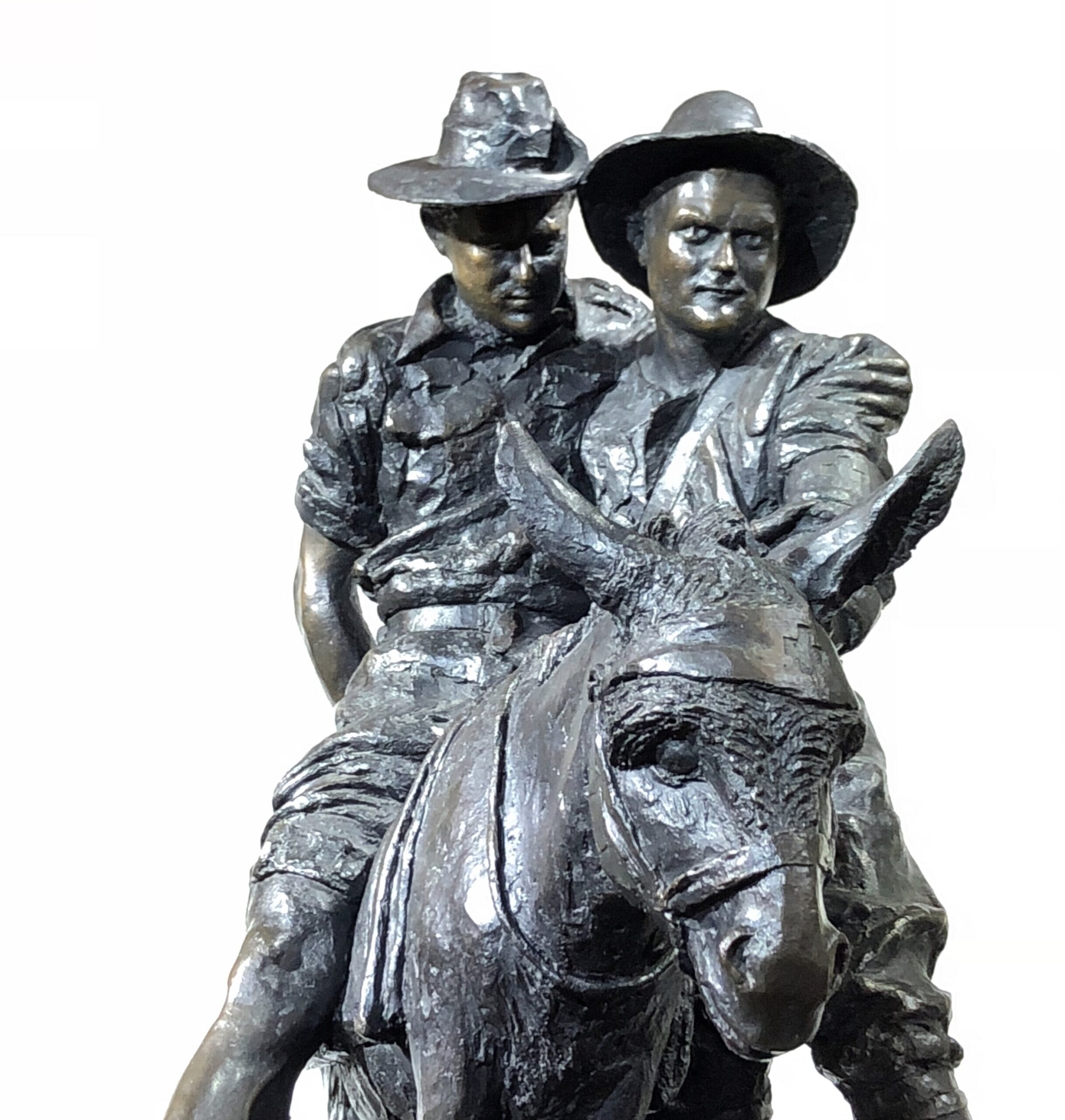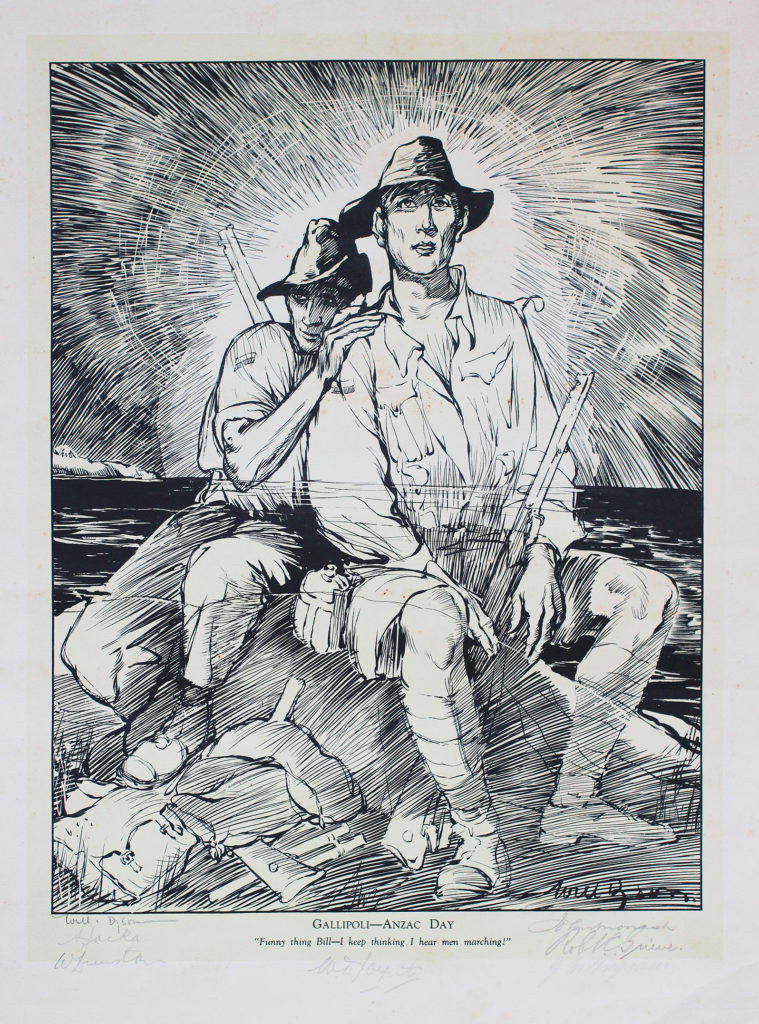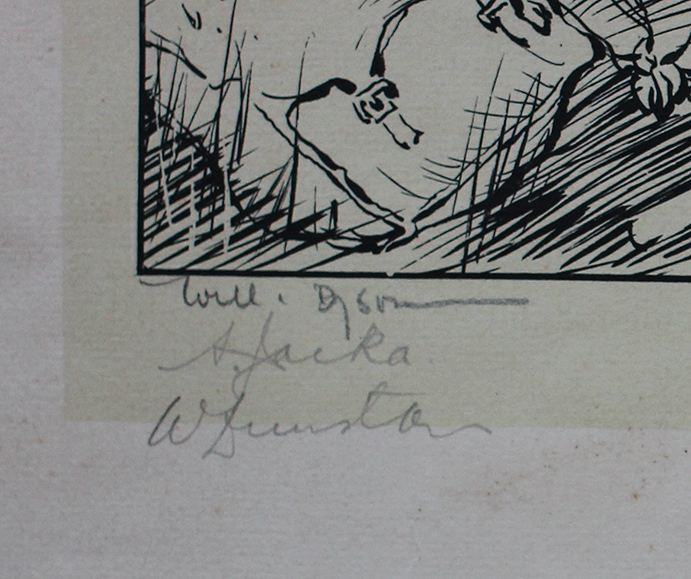
Today is an important one in Australia; the 25th of April 1915 was a ‘coming of age’, the first military action as an independent dominion. While the troops of the young nation didn’t achieve what they set out to do, and 8,709 didn’t return, it resulted in a sense of pride in those who did return with tales of valor and mateship. Even in the midst of the military disaster it turned out to be, a sense of being ‘Australian’ arose. Although the last of the troops who served at Gallipoli have passed on, all around Australia the younger generations gather at dawn, remembering the sacrifice and bravery of past generations.

This image by Will Dyson, the first official War Artist for Australia, illustrates the sentiment 12 years later; two soldiers in full kit sit by the sea, but are just ghosts on closer examination with the coastline visible through their bodies. The caption reads “Funny thing Bill- I keep thinking I hear men marching!” – the memories of those who didn’t return are still sharp. This cartoon appeared in the Herald on Anzac day in 1927, and proved to be so popular another print run was ordered, on better quality paper and in a limited number. These ended up in various RSL clubs around the country, and it was perhaps in one of these that the collection of signatures along the lower edge were collected. While it has Dyson’s own pencilled signature, the others are unexpected and remarkable: they are all winners of the Victoria Cross in WWI, with one exception: Lieutenant General Sir John Monash. It is an apparently unique tribute to the Gallipoli spirit, put together by soldiers who were there.


Will Dyson was born in 1880 near Ballarat, and was self-taught as an artist. He obtained work with various magazines as a satyrical illustrator, and became good friends with Norman Lindsay, marrying his sister Ruby. He spent the war years in England, and volunteered his skills to the Australian Imperial Forces “to interpret in a series of drawings, for national preservation, the sentiments and special Australian characteristics of our Army”. In this capacity he travelled to the Western Front in 1916, and was appointed the first official war artist in 1917. He was wounded twice as he proceeded with the troops, recording a very human side of the great conflict. He returned to Melbourne in 1925 where he worked at the Herald. During this time he produced the following print (1927) , and returned to London in 1930 where in died in 1938.
The original drawing in the Australian War Memorial, Canberra. Moorabool is pleased to offer the above work.

Also in the Australian War Museum is another dramatic depiction of Australian Anzac spirit, the life-size bronze ‘Simpson and his donkey’, by ‘Peter Corlett (1944 -). This work was commissioned by the Government, and installed on Anzac Day 1988 at the front of the War Memorial in Canberra. At the same time, 12 smaller versions were made & sold, and Moorabool currently has one of these.
[metaslider id=41523]
John Simpson Kirkpatrick was actually a British merchant sailor who jumped ship to enlisted in Fremantle, using his middle name. On the first day of his arrival at Gallipoli as a stretcher bearer, he found an abandoned donkey he named

Duffy. The donkey helped Simpson carry the wounded who were still able to ride. This grainy photo was the inspiration for the legend, showing a wounded soldier being assisted by Simson down to the beach for evacuation to the hospital ships moored offshore.
We are honoured to have these reminders of the struggles that helped form Australia. I’ll finish with a group of prints that give a unique ‘Australian’ image to the warfare of WWI 100 years ago:
[metaslider id=41521]
[yith_wc_productslider id=41512]
